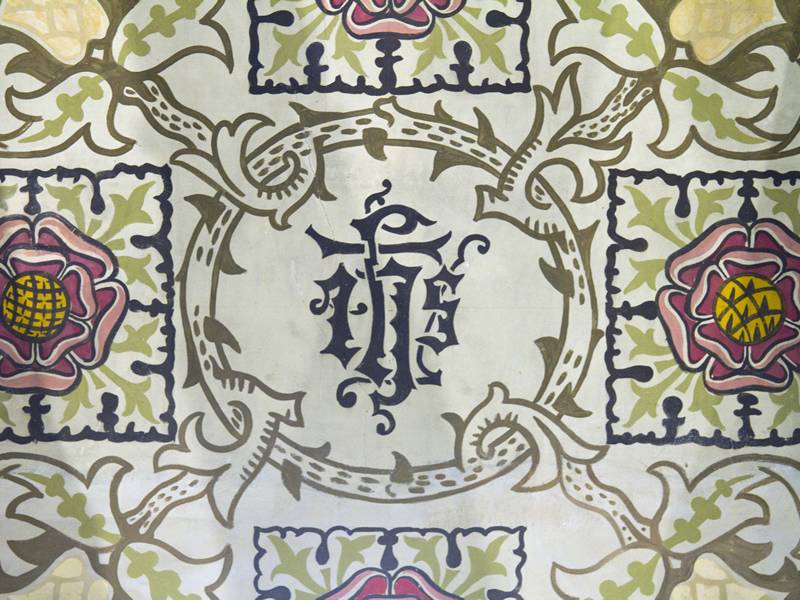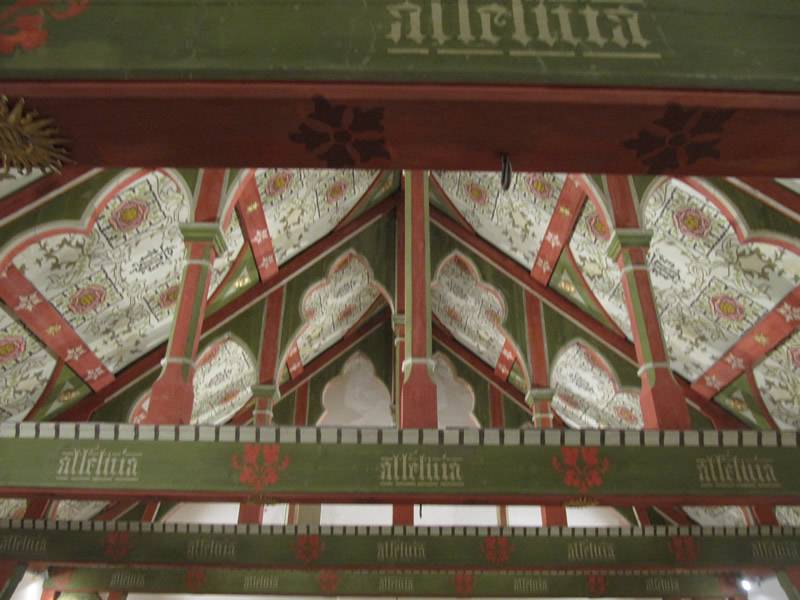The Ceilings
The unusual and complete painted plasterwork and timberwork ceilings of the Nave, Chancel and Lady Chapel (South Aisle) of St Bridget's formed part of later, extensive restorations of the church carried out between 1864 and 1876, by William Butterfield, (1814-1900), a leading architect of the early Ecclesiological movement of the mid nineteenth century and whose influence is recognised today as one of the forebears of the modern movement in architecture.
View our Documentary on the Restoration of the William Butterfield Ceiling in Saint Bridget's Church, Brigham.
View an Interview with Eric Robson for the Ceiling Restoration.
His work at Brigham spans the period after the mid-century revolt against pure imitation of early medieval design and the later reaction in the 1870’s against robust High Victorian Gothic novelty. However, the glories of High Victorian originality can be seen best at Brigham in this highly significant and important work, where the rich and varied expression of soaring roofs are embellished and decorated on all surfaces. Here the exuberant patterned ceilings set off the foliated trusses, principles and posts of the roof structure and contrast delightfully with the older architecture, but do not overshadow it. The overall effect is light and airy with none of the over-ornamentation and heaviness of his later dark and polychromatic work.
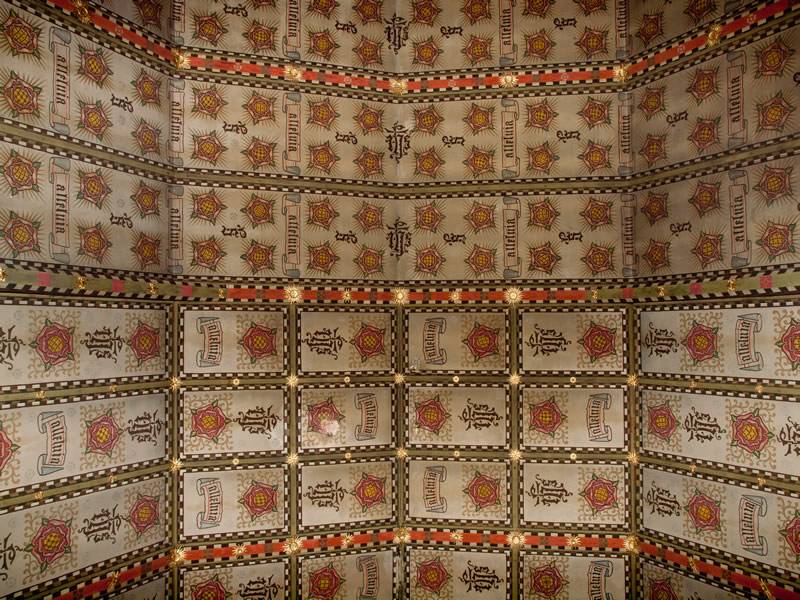
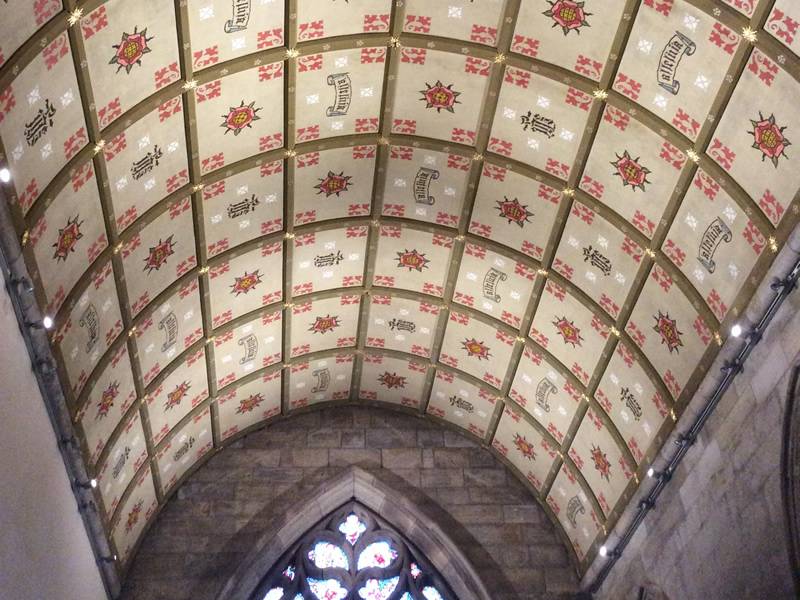
Decorated roofs are not very common in Butterfield’s work and mainly comprise painted wooden ceilings picked out with stars, foliage and monograms. Brigham is one of very few painted plaster schemes and has a lightness of touch. He was influenced in this art by his pupil master, the antiquarian scholar and architect, E L Blackburne, the author of a history of applied decoration applied to English architecture, Decorative Painting of the Middle Ages (London 1847).
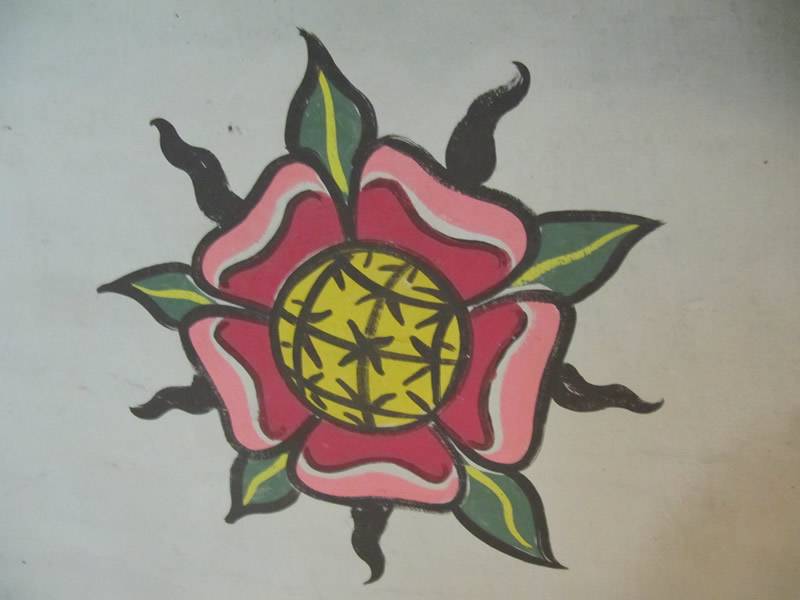
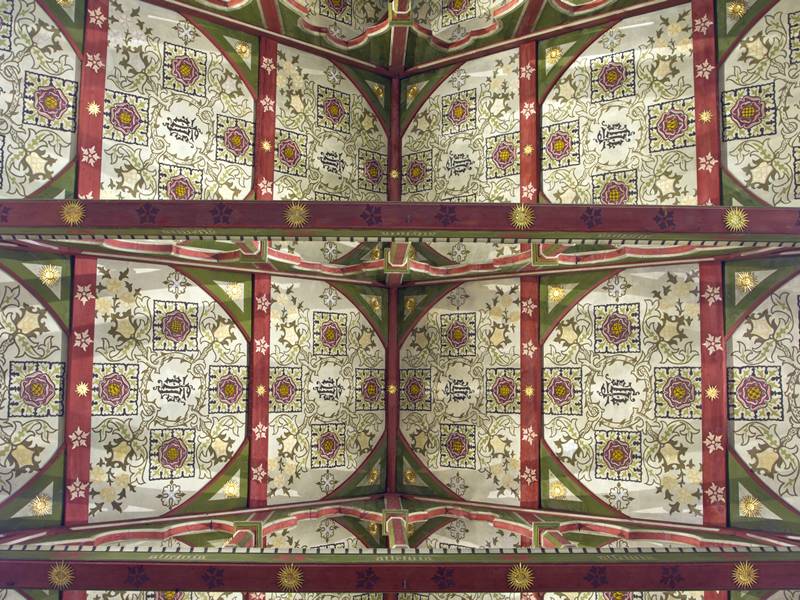
The painting was carried out in 1876 by trusted local village craftsmen, the Robinson family, to Butterfield’s full size cartoon designs and under the close supervision of the architect, adding to the home-grown significance of this work of exceptionally high quality.
It’s importance cannot be understated as it remains one of only a handful of examples of painted decoration in Cumbrian churches. The painted decoration in St Bridget’s has survived in remarkably good condition for almost 150 years and is one of the glories of this exceptional Grade 1 listed church.
Extracted from ‘Condition Assessment and Treatment Recommendations for the Nave and South Aisle Ceilings, St Bridget’s Church, Brigham, Cumbria, Diocese of Carlisle, July 2012’. Elaine Blackett-Ord MA(Cons. Studies York) DIP.ARCH IHBC RIBA AABC, Director, Blackett-Ord Conservation Architecture
In 2013 the ceilings of the Nave and Lady Chapel were restored to their original and remarkable condition, through the hard work of a wide group of people.
